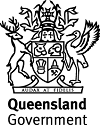Published Friday, 13 February, 2009 at 05:49 PM

Deputy Premier and Minister for Infrastructure and Planning
The Honourable Paul Lucas
FNQ PLAN PROTECTS JOBS AND THE ENVIRONMENT
The Bligh Government’s new long-term plan for Far North Queensland will create jobs, limit urban sprawl and protect the region’s unique environment.
Deputy Premier Paul Lucas launched the Far North Queensland Regional Plan 2009-2031 in Cairns today, to safeguard the region’s natural beauty from inappropriate development.
“The people of Far North Queensland wanted us to protect their natural drawcards and farming areas from adhoc development and this plan delivers in spades,” Mr Lucas said.
“More than 99 percent of Far North Queensland is off limits to urban development.
“This means generations of Queenslanders and tourists to come will be able to enjoy the Far North’s natural beauty, from the World Heritage listed Wet Tropics to the Great Barrier Reef.
“I’d like to thank the four local members Desley Boyle (Cairns), Warren Pitt (Mulgrave), Steve Wettenhall (Barron River) and Jason O’Brien (Cook) for strong input on behalf of their local communities, which has helped shape this final plan.”
Tourism Minister Desley Boyle said changes had been made to the draft plan in a number of areas following local feedback.
"This process was about listening to locals and getting the balance right to create more tourism jobs, increase protection for the environment and provide homes for the region’s growing population,” said Ms Boyle.
“We don’t want sprawling new suburbs in the wrong areas away from transport, infrastructure and services, so development will be controlled within an Urban Footprint.
“The Urban Footprint identifies enough land for the 50,000 new homes that will be needed by 2031.
“Three quarters of these will be around Cairns, particularly in a new master-planned community in the Mount Peter area.
“Cairns Regional Council is already hard at work, running an Enquiry By Design this week to shape this future community.
“This Regional Plan is great for the tourism industry, it will encourage growth and create more jobs.
“Not only does this plan protect the natural treasures that attract tourists here, it still allows appropriate nature based projects like the Skyrail Cableway and Mamu Canapy Walk.
“Medium scale tourism projects, like Tjapukai Aboriginal Cultural Park or Hartley's Creek Crocodile Farm, are also allowed outside the urban footprint as long as they are not in areas of high ecological significance or on good quality agricultural land.”
Deputy Premier Paul Lucas said the plan is backed by the Bligh Government spending almost $2 billion on infrastructure projects in Far North Queensland over the next 3 years alone, creating more than 3600 jobs.
“We’ve listened to the close to 1000 submissions on the draft plan and made significant changes to deliver stronger environmental protection as well as some real wins for farmers,” said Mr Lucas.
“There are tighter controls and buffer zones for urban development near wetlands and waterways, to protect the environment and wildlife.
“I want to make it clear that this does not affect any existing agricultural activities.
“However this plan also encourages voluntary rehabilitation of nature corridors by landowners, for our native animals and plants.
“After listening to farmers, councils will be able to approve boundary realignments.
“Any changes must improve agricultural efficiency or diversification, resolve tenure issues or result in conservation gains.
“It is important to note when boundaries are realigned, landowners must provide buffers where necessary for any neighbouring land uses.”
The Regional Plan will be reviewed at least every 10 years.
Media enquiries: Matthew Klar 0437 435 223
FNQ REGIONAL PLAN 2009 – 2031
·Regional Landscape & Rural Production Area - 99.4% of the region -7,236,697 ha – Off limits to developers.
·Urban Footprint - 0.4% of the region - 27,076 ha
·Rural Living Area - 0.2% of the region - 8426 ha
·The Urban Footprint provides enough land for the extra 50,000 homes needed by 2031.
·Growth will be focused on a new master-planned community at Mount Peter - the area between Edmonton and Gordonvale, west of the Bruce Highway.
TOURISM
·The size of tourism developments allowed outside the urban footprint increased to include “medium-scale” projects, as long they are as not in areas of high ecological significance or on good quality agricultural land.
·Allows accommodation for up to 250 people and accompanying facilities with a floor area of no more than 4000m2
·Similar scope to Tjapukai Aboriginal Cultural Park or Hartley's Creek Crocodile Farm.
·The size of small scale developments like backpacker hostels and farm stays allowed outside the urban footprint has doubled.
·Now they can include accommodation for up to 100 people and accompanying facilities with a floor area up to 2000m2, but must have little or no impact on areas of high ecological significance and good farm land.
PROPOSED WELCOME POCKET AGED CARE FACILITY (MYOLA)
·site now included in the Urban Footprint, paves the way for the Tablelands Regional Council to consider a development application, if lodged.
·A direction will be issued to the council to amend its planning scheme to only allow this retirement village and no other inappropriate development.

